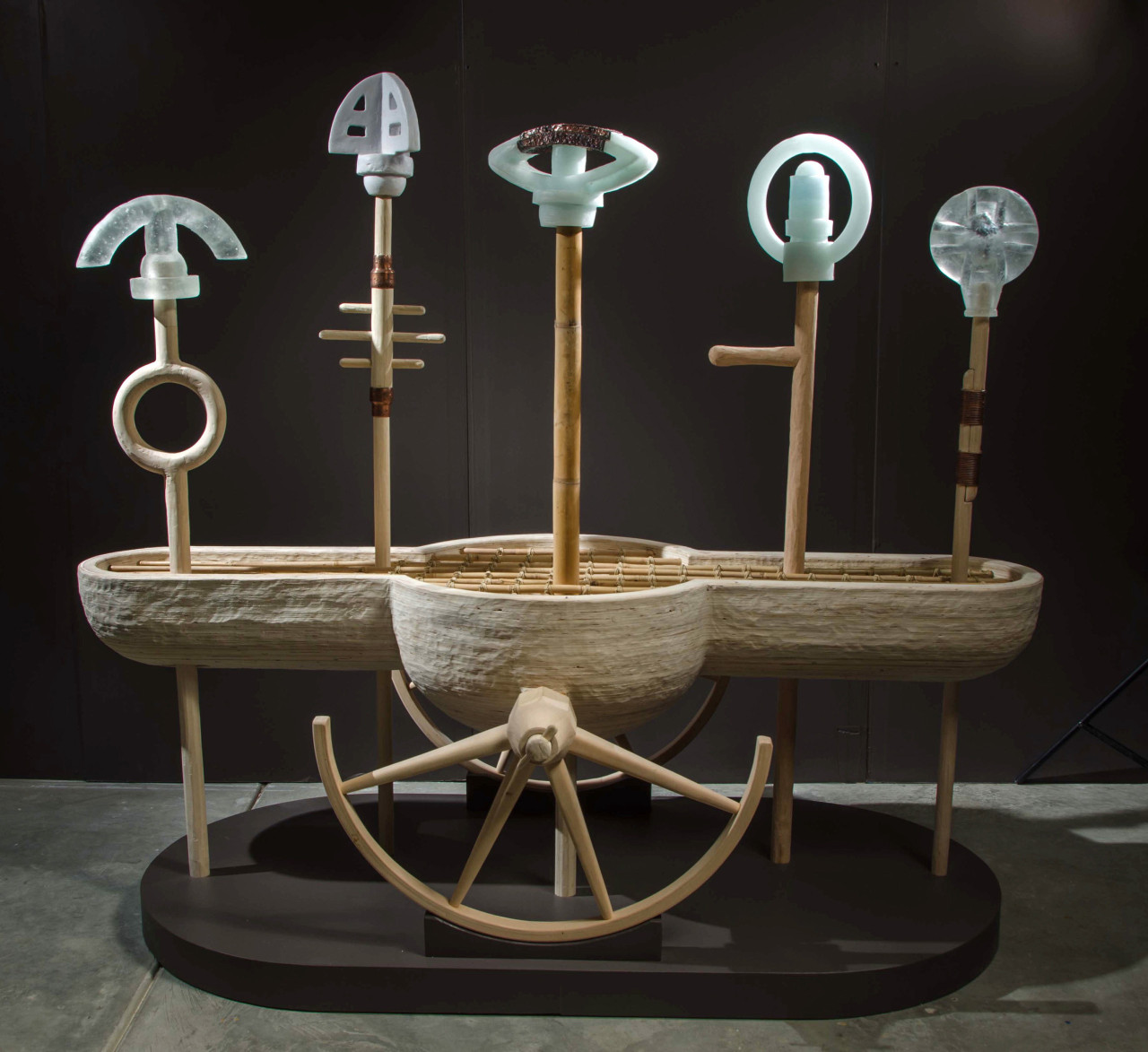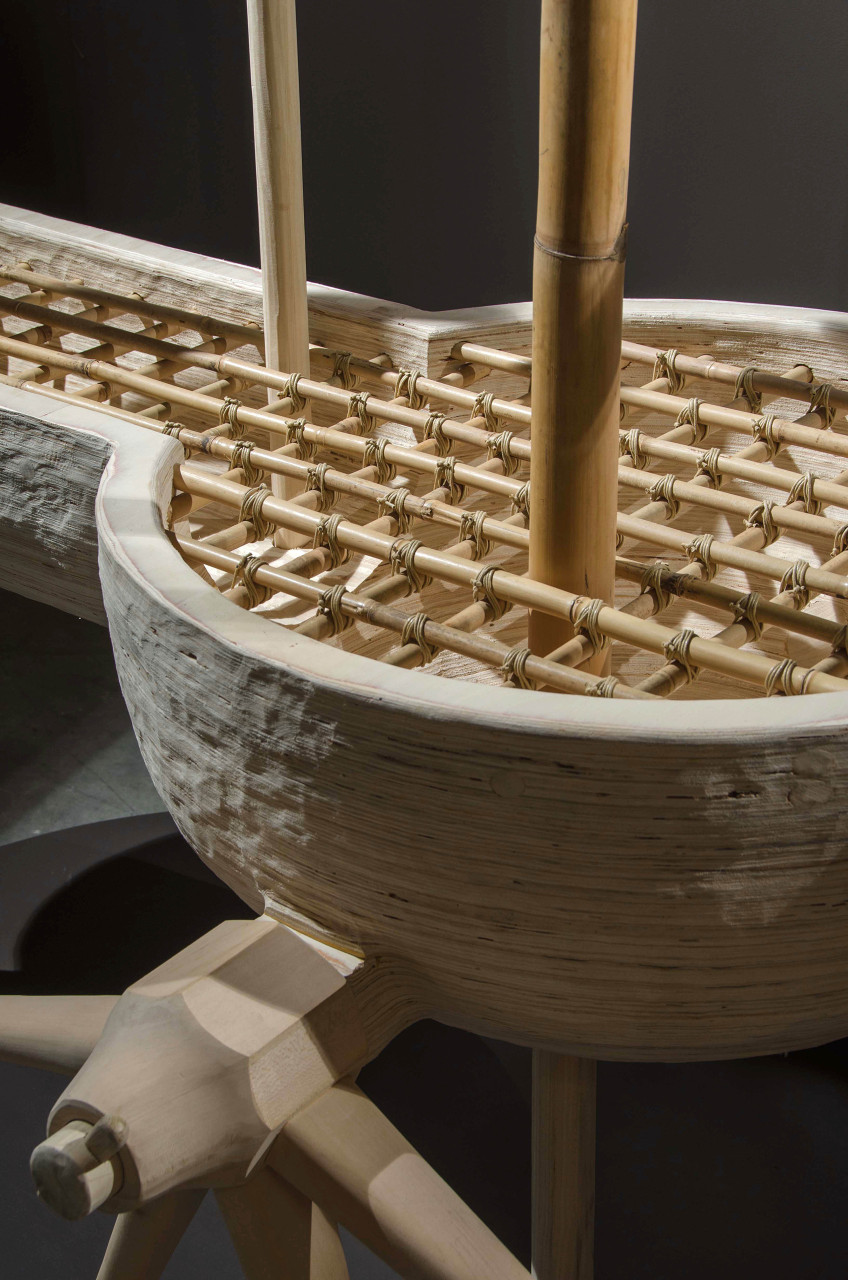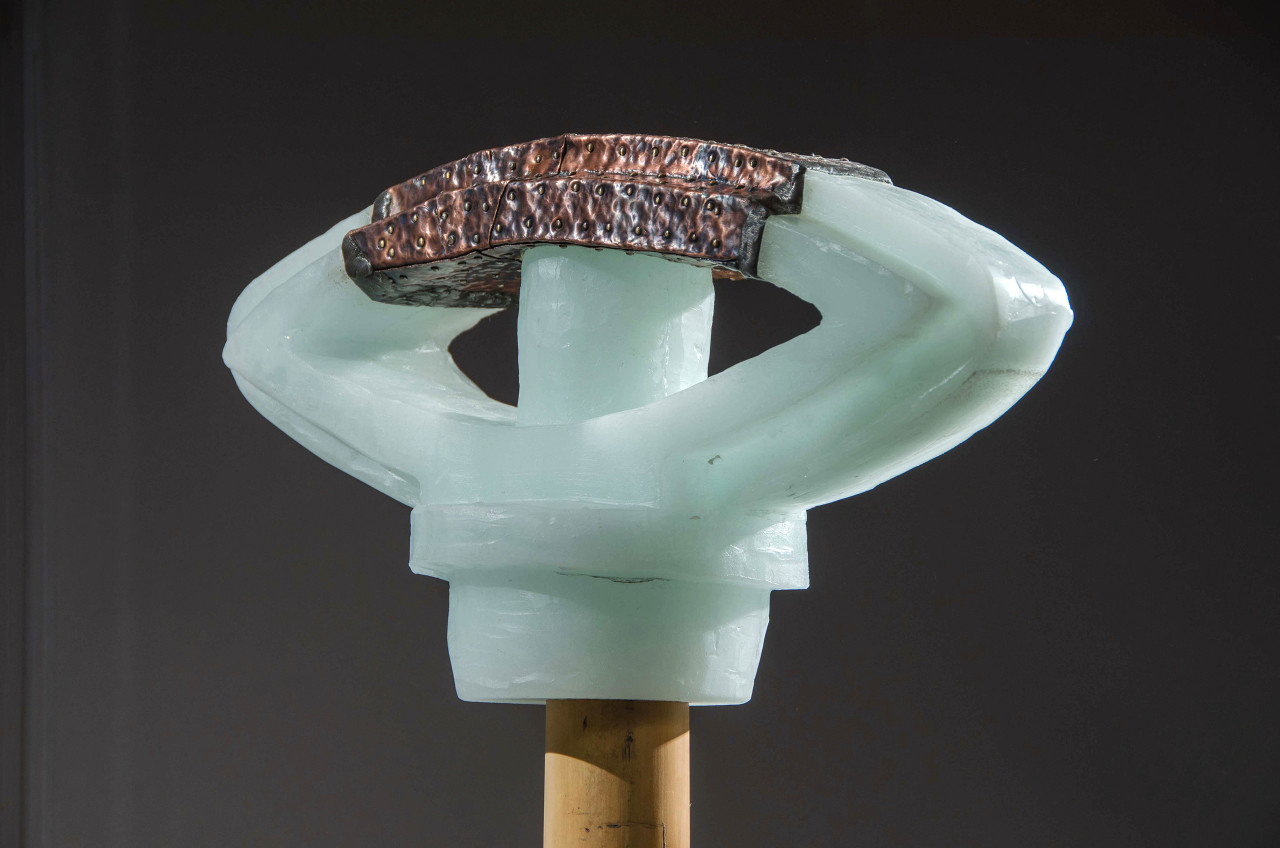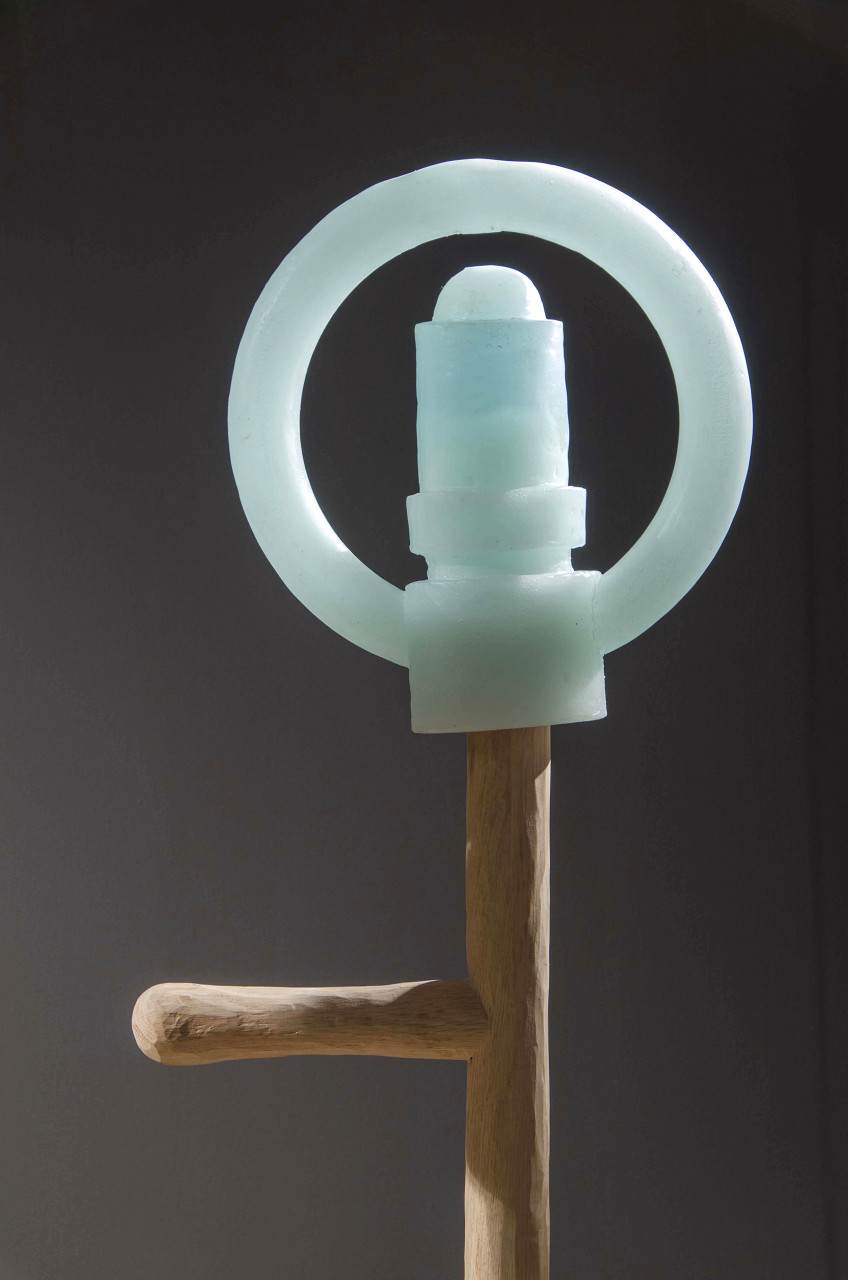Itinerant Tinker
I have acknowledged my interest in farm and garden tools, I like old pick-ups with beat-up paint jobs that obviously belong to gardeners because of the shovels, rakes, brooms, etc that silhouette against the evening sky on the top of their worn and mended handles. The image of a 19th century tinsmith/basket/utensil repairman’s cart is a similar example of familiar “forms in space”, on a stick.
Groups of nineteenth century (Edo Period) fireman were divided into 48 districts. Each district used an abstract, usually white, sculptural symbol atop a long pole, to identify the site of a fire. These symbols, called “matoi”, were derived from their Kanji alphabet, which conveniently had 48 characters.
American artist Sol Lewit worked for decades, developing a sculptural vocabulary based on the cube.
The glass forms in this piece were developed with a nod to Lewit’s geometric restrictions, to the romance of Japan’s tattooed acrobatic fire brigades, and to itinerant tinkers, suburban gardeners, and family dirt farmers everywhere.
Short Artist’s Statement from Biola Exhibition, 2014:
Imperfect, Impermanent, and Incomplete
“The Japanese have a word which summarizes all the best in Japanese life, yet it has no explanation and cannot be translated. It is the word shibui… One attempt to define the concept of shibui refers to a made object that is beautiful by being precisely what it was meant to be and not elaborated upon.”
-James Michener, Iberia.
I believe that objects can trigger more than memories. Made things can suggest a kind of poetic wisdom, a knowledge or an awareness that cannot be named or learned, but can be experienced.
I hope these objects seem made without being dated.
I hope this work speaks to a timeless usefulness, without being utilitarian. I don’t expect that these objects will enjoy universal understanding, but… It is my sincere hope that, for you, these sculptures are precisely what they were meant to be.
Professor John Leighton
Winter, 2014




